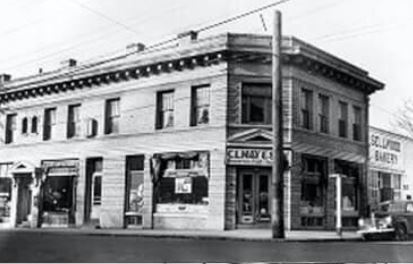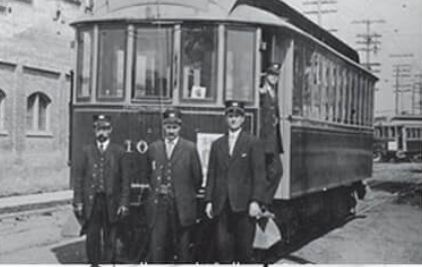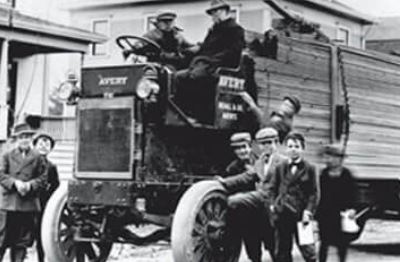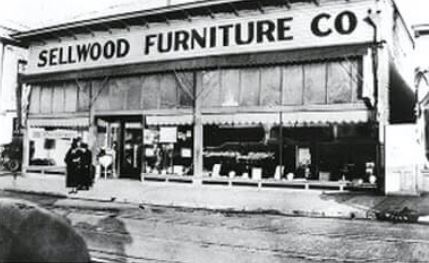Sellwood-Moreland Neighborhood
QUAINT RIVERSIDE COMMUNITY
Nestled along the Willamette River in the heart of Portland, Oregon, Sellwood-Moreland is a thriving neighborhood that effortlessly blends community charm with urban amenities. Its tree-lined streets are dotted with an array of local businesses, charming boutiques, and delectable dining options. The neighborhood’s lush parks offer picturesque settings for outdoor enthusiasts, while top-rated schools provide excellent educational opportunities for families. Explore the charming antique shops, savor a cup of artisan coffee, or enjoy a leisurely stroll along the riverfront. With a diverse range of housing options, from historic craftsman homes to modern apartments, Sellwood-Moreland has something for everyone. Discover the essence of Portland living right here in this dynamic neighborhood.
FROM PORTLAND WITH LOVE
Let's Tour The City
Sellwood-Moreland Real Estate & Walkability Score
Sellwood-Moreland’s real estate market embodies the allure of urban living with a touch of suburban tranquility. This sought-after neighborhood in Portland, Oregon, boasts a diverse mix of housing styles, from charming bungalows to modern condos, catering to various preferences and budgets. What truly sets it apart is its exceptional walkability score. With a pedestrian-friendly layout, residents can easily access local boutiques, eateries, and parks, making it a haven for those who crave convenience and community. Whether you’re seeking a family-friendly atmosphere or a lively urban experience, Sellwood-Moreland’s real estate offerings and high walkability score make it an enticing destination for discerning homebuyers.
Sellwood-Moreland Neighborhood
DATE NIGHT: EAT & DRINK
Indulge in culinary delights and romantic ambience with our Date Night Eat & Drink section. Discover the perfect spots for an unforgettable evening of dining and cocktails.
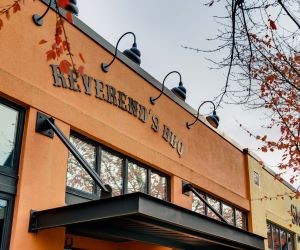
Reverend’s Barbeque: Fried chicken, smoked meats and beer on tap in a contemporary space with both counter and booth seating.
Service Options: Dine-In · Curbside Pickup · No-Contact Delivery
Address: 7712 SE 13th Ave, Portland, OR 97202
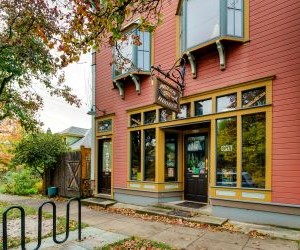
The Muddy Rudder Public House: Laid-back pub with a kid-friendly garden patio offering pizza, sandwiches and salads, plus live music.
Service Options: Dine-In · Takeout · No Delivery
Address: 8105 SE 7th Ave, Portland, OR 97202
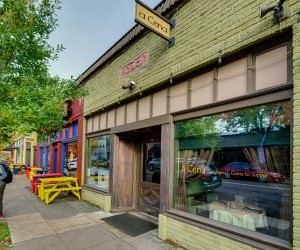
a Cena Ristorante: Housemade pastas and locally sourced Italian fare served in an intimate, warm-hued eatery.
Service Options: Dine-In · Takeout · No Delivery
Address: 7742 SE 13th Ave, Portland, OR 97202
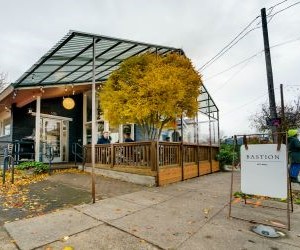
Bastion PDX: Nutritionist owned. 100% gluten-free and dairy-free. Organic and sustainable. Farm-focused and seasonal. Plant-rich food as medicine.
Service Options: Dine-In · Curbside Pickup · Delivery
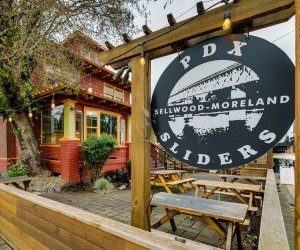
PDX Sliders: Easygoing eatery for imaginative sliders and sandwiches made with local ingredients, plus craft beers.
Service Options: Dine-In · Takeout · No-Contact Delivery
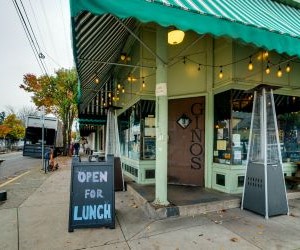
Gino’s Restaurant & Bar: Modern trattoria offers carefully prepared Italian dishes and an extensive wine list in a sleek room.
Service Options: Dine-In · Curbside Pickup
Address: 8051 SE 13th Ave, Portland, OR 97202
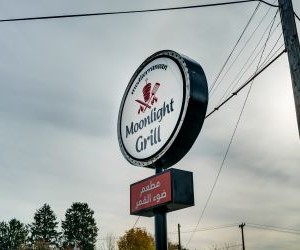
Moonlight Grill PDX: “Delicious, generous servings of family-owned Mediterranean comfort food. Lovely service. Super happy it’s near Lewis & Clark College campus.” – YELP review
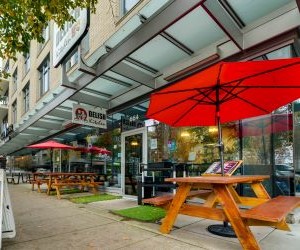
Delish Kitchen 108: Asian cuisine delights with bento, sushi, and tea.
Service Options: Dine-In · Curbside Pickup · No-Contact Delivery
Address: 664 S Gaines St, Portland, OR 97239
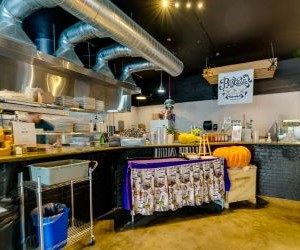
Pastaia: Welcome to Pastaia – fresh, hand-made pasta with a Northwest flare. Frequently rotating menu with season ingredients.
Service Options: Dine-In · Takeout · No Delivery
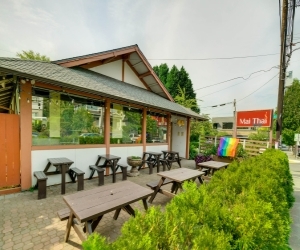
Mai Thai Portland: Noodles and other classic Thai dishes come in a colorful, light-filled room with art on the walls.
Service Options: Dine-In · Takeout · No-Contact Delivery
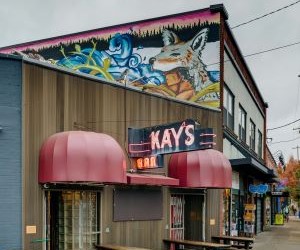
Kay’s Bar: Long-standing local bar offering comfort food, cocktails and events such as roller-derby viewings.
Service Options: Dine-In · Curbside Pickup · No Delivery
Address: 6903 SE Milwaukie Ave, Portland, OR 97202
503-232-4447 | Website | Menu
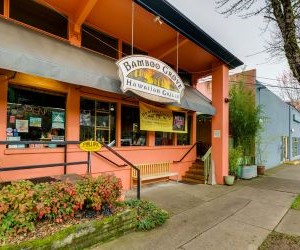
Bamboo Grove Hawaiian Grille: Chill eatery offering hearty plates of Hawaiian fare, plus tropical decor, cocktails and music.
Service Options: Dine-In · Takeout · No-Contact Delivery
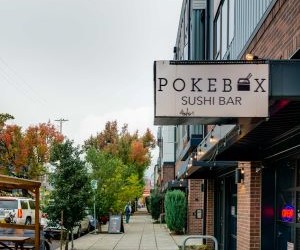
Poke Box Sushi Bar: A cherished family-owned restaurant located in the heart of Portland’s Sellwood neighborhood.
Service Options: Dine-In · Takeout · Delivery
Address: 7414 SE Milwaukie Ave, Portland, OR 97202
503-236-8267 | Website | Menu
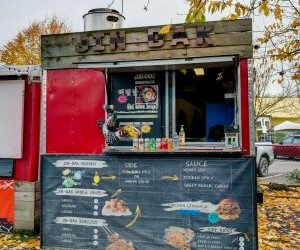
Jin-Dak: Enjoy a little taste of Korea from this gourmet fusion food truck that was rated top food truck in downtown Portland for 3 years.
Service Options: Dine-In · Takeout · No Delivery
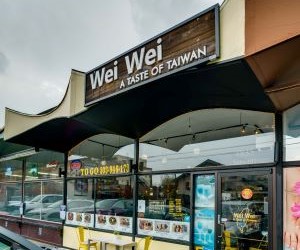
Wei-Wei – A Taste of Taiwan: Creative Taiwanese noodle soups, baos, desserts, and teas in an intimate space with yellow chairs.
Service Options: Dine-In · Takeout · No-Contact Delivery
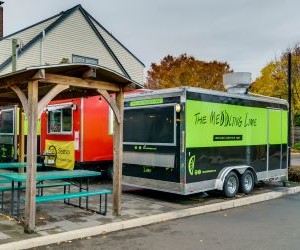
The Meddling Lime: Food truck with seating offering a creative twist on tacos and burritos, plus churros and vegan options.
Service Options: Dine-In · Takeout · Delivery
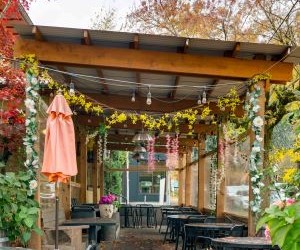
Relish: Elevated, locally sourced American pub fare in warm, homey environs decorated with paintings.
Service Options: Dine-In · Curbside Pickup · Delivery
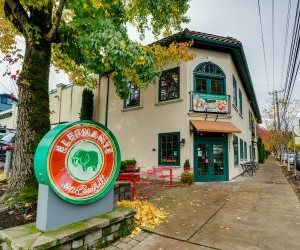
Elephants on Corbett: Local chain serving classic and creative deli fare plus weekend brunch in a bright setting.
Service Options: Dine-In · Curbside Pickup · No-Contact Delivery
Address: 5221 S Corbett Ave, Portland, OR 97239
503-937-1075 | Website | Menu
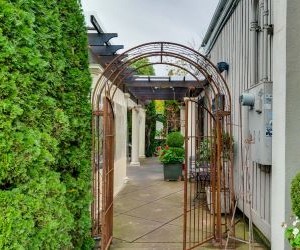
Papa Hadyn – Sellwood: European-style desserts, plus upscale sandwiches, salads, and entrees at this established cafe.
Service Options: Dine-In · Curbside Pickup · Delivery
Address: 5829 SE Milwaukie Ave, Portland, OR 97202
503-232-9440 | Website | Menu | Reservations
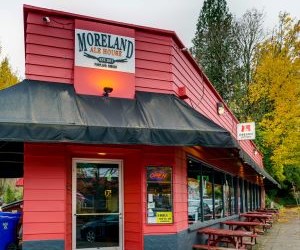
Moreland Ale House: Laid-back sports bar with Asian-inspired bites, local craft beers, weekend brunch and outdoor seating.
Service Options: Dine-In · Takeout · No Delivery
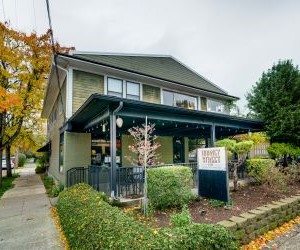
Harney Street Cafe: New restaurant serving breakfast, lunch, brunch, and delicious food for all of Portland right in the heart of Sellwood.
Service Options: Dine-In · Curbside Pickup · Delivery
Address: 8337 SE 17th Ave, Portland, OR 97202
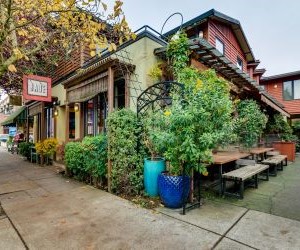
Jade Bistro Teahouse & Patisserie: This homey Thai and Vietnamese cafe also sells French-inspired confections like tarts and macarons.
Service Options: Dine-in · Takeout · Delivery
Address: 7912 SE 13th Ave, Portland, OR 97202
503-477-8985 | Website | Menu
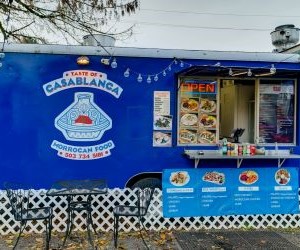
Taste of Casablanca: An amazing menu of Moroccan cuisine with gyros, wraps, and plates.
Service Options: Dine-In · Curbside Pickup · Delivery
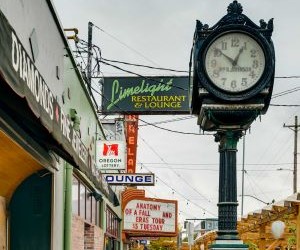
Limelight Restaurant & Lounge: Unassuming spot with bar food, pool tables, a jukebox, an extensive beer selection and outdoor seats.
Service Options: Dine-in · Takeout · No-Contact Delivery
Address: 6708 SE Milwaukie Ave, Portland, OR 97202
503-235-5797 | Website | Menu
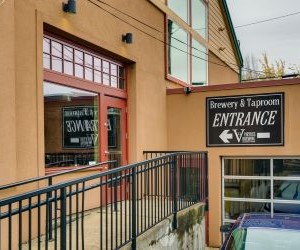
13 Virtues Brewing: Local, perennial brewpub with house craft beers and happy hours, plus cheesesteaks and other sandwiches.
Service Options: Dine-In · Takeout · Delivery
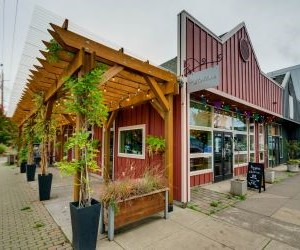
Pizzeria Stellina: Neo-Neopolitan pizze and small plates made from PNW ingredients, served in a cozy space in the Sellwood-Mooreland, Portland Oregon.
Service Options: Dine-In · Takeout · Delivery
Address: 8000 SE 13th Ave, Portland, OR 97202
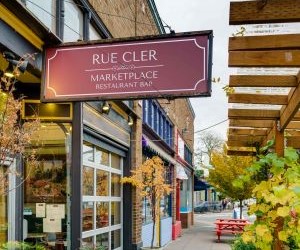
Rue Cler Marketplace: Rue Cler Marketplace, a Parisian style bistro offering an intentional, regionally sourced menu of French and modern American dishes
Service Options: Dine-In · Takeout · No Delivery
Address: 6716 SE Milwaukie Ave, Portland, OR 97202
503-894-8684 | Website | Menu | Reservations
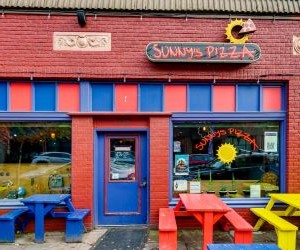
Sunny’s Pizza: Come by Sunny’s for pizza by the slice, salads, full 18″ pizzas, draft beer, bottled beer, hard ciders, wines
and more.
Service Options: Dine-In · Takeout · Delivery
Address: 7738 SE 13th Ave, Portland, OR 97202
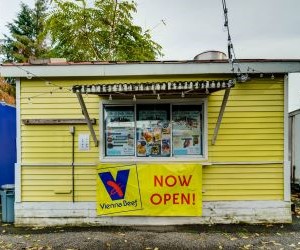
The Windy Rose: Where Portland meets Chicago in some of their most famous offerings: Italian Beef.
Service Options: Takeout · Delivery
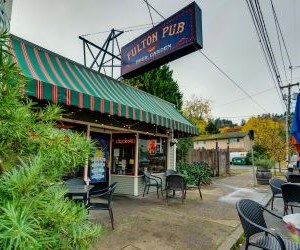
McMenamins Fulton Pub & Brewery: Remodeled former speakeasy offering house-brewed beer, basic pub grub, and patio seating.
Service Options: Dine-In · Curbside Pickup · No-Contact Delivery
Address: 0618 SW Nebraska St, Portland, OR 97239
503-246-9530 | Website | Menu
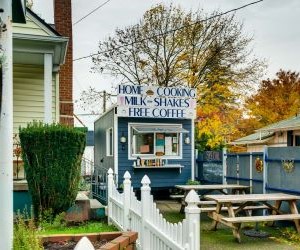
Nana’s Guilty Pleasures: Serving home cooked breakfast and lunch.
Service Options: Dine-In · Takeout · Delivery
Address: 6108 SE Milwaukie Ave, Portland, OR 97202
650-703-4806 | Website | Menu
Schools
Sellwood-Moreland boasts top-tier schools, offering a seamless educational journey. From nurturing beginnings in elementary school to thriving at the middle school level, students excel toward a promising future.
Elementary Schools:
Llewellyn Elementary School | 6301 SE 14th Ave, Portland, OR 97202 | 503-916-6216 | Website
Duniway Elementary School | 7700 SE Reed College Pl #5, Portland, OR 97202 | 503-916-6343 | Website
Middle Schools:
Sellwood Middle School | 8300 SE 15th Ave, Portland, OR 97202 | 503-916-5656 | Website
High School:
Sellwood-Moreland does not have its own dedicated high school. Instead, high school students in the Sellwood-Moreland neighborhood typically attend high schools in the surrounding areas of Portland, Oregon, depending on their residential location. Some nearby high schools that serve the area include:
Cleveland High School | 3400 SE 26th Ave, Portland, OR 97202 | 503-916-5120 | Website
Franklin High School | 5405 SE Woodward St, Portland, OR 97206 | 503-916-5140 | Website
Grant High School | 2245 NE 36th Ave, Portland, OR 97212 | 503-916-5160 | Website
TOUR THIS NEIGHBORHOOD
SELLWOOD-MORELAND COMMUNITY RESOURCES
Discover Sellwood-Moreland’s vibrant community resources, a hub of support and enrichment. From parks to local organizations, find everything you need to thrive in this welcoming neighborhood.
Sellwood Community House – non-profit neighborhood-operated community center.
Moreland Farmer’s Market – don’t miss it.
The Sellwood Moreland Business Alliance – eat, shop & enjoy.
Oaks Amusement Park – one of the oldest amusement parks in the country.
Sellwood-Moreland Library – a branch of the Multnomah County Library, in the Sellwood neighborhood.
Sellwood Moreland Improvement League (SMILE) – one of 94 neighborhood associations recognized by the City of Portland.
Southeast Uplift Neighborhood Program – supports community organizations with a variety of resources to build movements.
Sellwood Community Center – strives to be a warm, welcoming, accessible place for people of all ages, abilities, and identities · to learn, play, gather, and connect
SELLWOOD-MORELAND STATS
County: Multnomah
Incorporated: February 25, 1889. (Sellwood)
2020 Census: Population of 10,475
Zip Code: 97202
Area Codes: 971
Website
Together with its community partners, SMILE sponsors or supports several popular events each year:
SPRING
Egg Hunt
Neighborhood Clean-up Day
SUMMER
SMILE Summer Music
Sundae in the Park
FALL/WINTER
Holiday Tree Lighting
Sellwood-Moreland Neighborhood
SHOPS & BUSINESSES
Explore the eclectic charm of Sellwood-Moreland’s shops and businesses. From boutique shops to local treasures, this neighborhood offers a unique and diverse shopping experience.
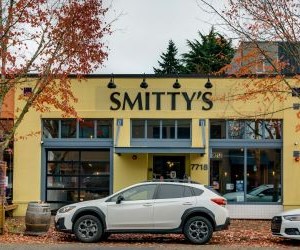
Smitty’s Taphouse: Recently opened, Smitty’s is an upscale modern taphouse with 30 taps and tons of seating and sports.
Service Options: Dine-In
Address: 7718 SE 13th Ave, Portland, OR 97202
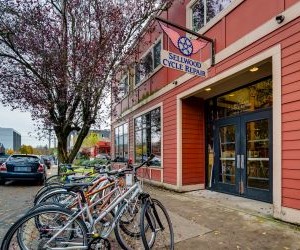
Sellwood Cycle Repair: They’re a full service repair shop located in Portland, OR. Cyclocross, mtb, road, whatever. They’ll shred it all day long.
Address: 7953 SE 13th Ave, Portland, OR 97202
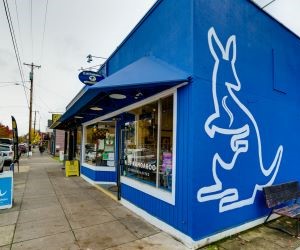
Blue Kangaroo Coffee Roasters: Kid-friendly neighborhood hangout for artisanal coffee, specialty sips, pastries and a welcoming vibe.
Service Options: Dine-In · Takeout · Delivery
Address: 7901 SE 13th Ave, Portland, OR 97202
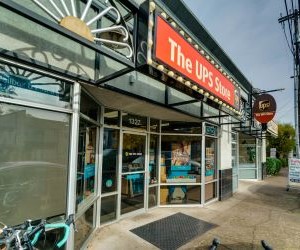
The UPS Store: Store offering shipping, packaging, printing and other services, plus office supplies.
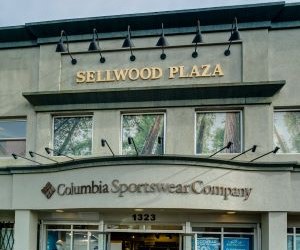
Columbia Factory Store: Located in the historic Old Sellwood neighborhood. They carry innovative outerwear, sportswear, footwear, and more.
Service Options: In-Store Shopping · In-Store Pickup
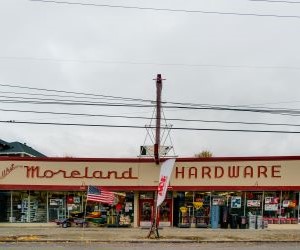
Westmoreland ACE Hardware: Hardware store stocking household tools, garden supplies, home decor and more.
Service Options: In-Store Shopping · Curbside Pickup · Delivery
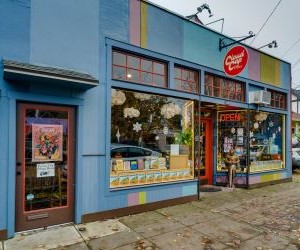
Cloud Cap Games: Game store in Portland, Oregon.
Service Options: In-Store Shopping · Curbside Pickup · Delivery
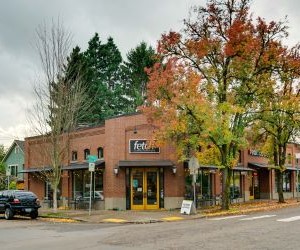
Fetch Coffee Roasters: Fetch Coffee helps make your day happier with every sip of specialty coffee sourced and roasted to bring out the best flavor in your cup.
Service Options: Dine-In · Curbside Pickup · No-Contact Delivery
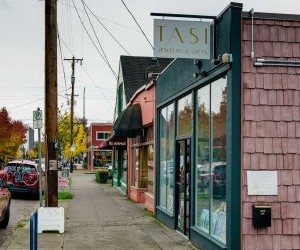
TASI Jewelry & Gifts: TASI jewelry is handmade in Portland, Oregon. They blend luscious gemstones, sterling silver, African beads, and ancient glass into a distinct jewelry line.
Service Options: In-Store Shopping · Curbside Pickup
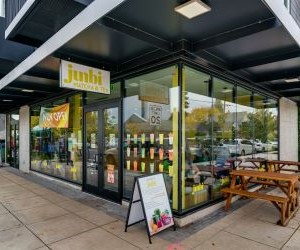
Junbi: Bubble tea store: Clean energy without the jitters or the crash.
Service Options: Dine-In · Takeout · No Delivery
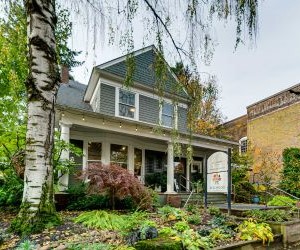
Sellwood Flower Company: Premier flower shop for all your Portland flower delivery services. They make sending flowers fun!
Service Options: In-Store Shopping · Curbside Pickup · Delivery
Address: 8215 SE 13th Ave, Portland, OR 97202
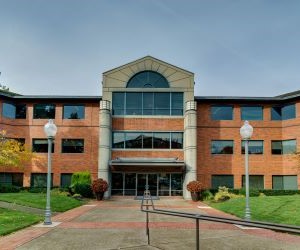
All About Businesses: Servicing individual, small, and medium-sized businesses with expert bookkeeping.
Service Options: Online Appointments · Onsite Services Not Available
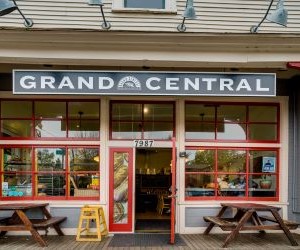
Grand Central Bakery: Artisan bakery and cafe offering breads, pastries, soups and sandwiches made from local ingredients.
Service Options: Dine-In · Takeout · Delivery
Address: 7987 SE 13th Ave, Portland, OR 97202
503-546-3036 | Website | Menu
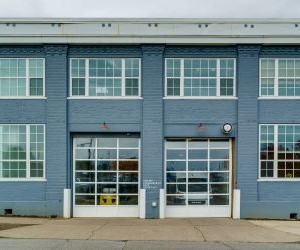
GMS Media and Advertising: Video production service in Portland, Oregon
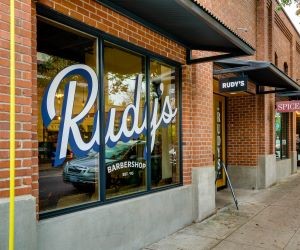
Rudy’s Barbershop: Catering to all ages and genders, providing stylish haircuts fit for anyone.
Address: 7861 SE 13th Ave, Portland, OR 97202
PARKS & GREEN SPACES
Oaks Bottom Wildlife Refuge -SE 7th Avenue and Sellwood Blvd
Sellwood Park -SE 7th Avenue and Miller Street
Sellwood Pool – 7951 SE 7th Ave, Portland, OR 97202
Sellwood Community Garden – 2033 SE Harney St, Portland, OR 97202
Sellwood Riverfront Park – 1221 SE Oaks Park Way, Portland, OR 97202
Westmoreland Park – 7530 SE 22nd Ave, Portland, OR 97202
Eastmoreland Playground – SE 30th Avenue and Crystal Springs Blvd, Portland, OR 97202
Eastmoreland Golf Course – 2425 SE Bybee Blvd, Portland, OR 97202
Crystal Springs Rhododendron Garden – 5801 SE 28th Ave, Portland, OR 97202
Oaks Pioneer Church Park – 455 SE Spokane St, Portland, OR 97202
Sellwood-Moreland Neighborhood
THINGS TO DO & SEE
Immerse yourself in Sellwood-Moreland’s lively tapestry of attractions. From scenic parks to charming shops, there’s a wealth of things to do and see in this inviting neighborhood.
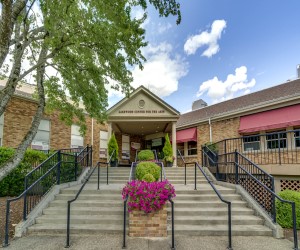
Lakewood Center for the Arts/Lakewood Theatre Company: Two-stage venue for plays and musicals, with an upscale thrift shop, local art gallery and snack bar.
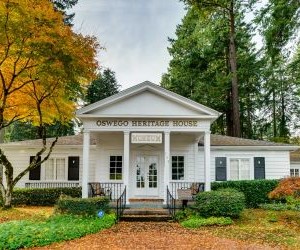
Oswego Heritage House: A historic house museum that provides insight into the history of Lake Oswego and its early settlers.
Address: 398 10th St, Lake Oswego, OR 97034
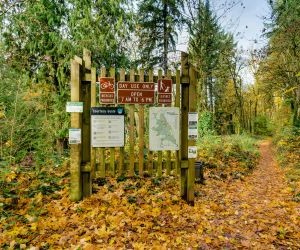
Iron Mountain Trail: A scenic hiking trail that offers stunning views of Mount Hood, Mount St. Helens, and Mount Adams.
Address: Iron Mountain Trail, Lake Oswego, OR 97034
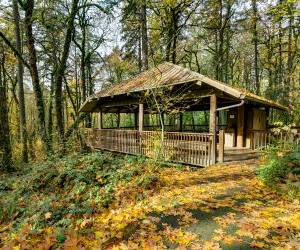
Tryon Creek State Natural Area: A lush forested park with numerous hiking trails, perfect for nature enthusiasts.
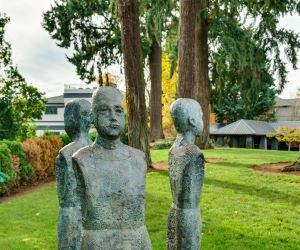
Millennium Plaza Park: A popular lakeside park with a waterfront promenade, playgrounds, and summer concerts.
Address: 200 1st St, Lake Oswego, OR 97034
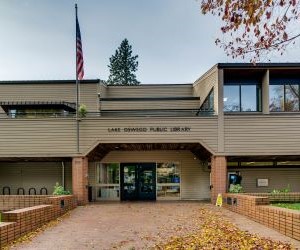
Lake Oswego Public Library: Notable for its architecture and extensive collection, this library is a hub for learning and community events.
Address: 706 4th St, Lake Oswego, OR 97034
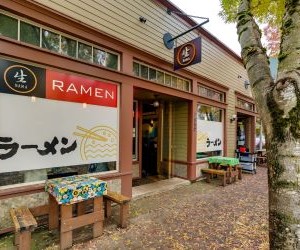
Nama Ramen: Lively Japanese spot for ramen and small plates, plus drinks, in a casual setting.
Service Options: Dine-in · Takeout · No-Contact Delivery
Address: 7952 SE 13th Ave, Portland, OR 97202
971-255-0555 | Website | Menu
Sellwood-Moreland Neighborhood
Nearby Neighborhoods
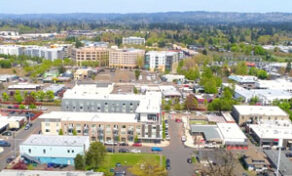
BEAVERTON
Located just seven miles west of downtown Portland, off Highway 26, Beaverton is the heart of the Tualatin Valley and known as the Silicon Forest — a growing destination for leading tech companies. The city offers a unique blend of thriving commerce, urban convenience, and small-town charm.
Visit Neighborhood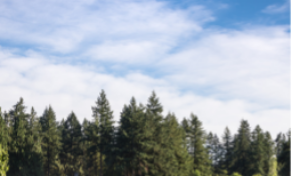
Lake Oswego
Lake Oswego is a thriving community, with a captivating blend of natural beauty and modern amenities. Explore serene lakeside views, top-tier schools, and a vibrant cultural scene in this Pacific Northwest gem.
Visit Neighborhood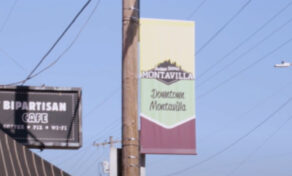
Montavilla
This Southeast Portland neighborhood is home to plenty of charm. Montavilla is a close-knit community that values its neighborhood businesses, which include shops and many diverse dining options. Located only six miles from downtown, Montavilla is bordered by I-205 and I-84 for great access to the rest of the city.
Visit Neighborhood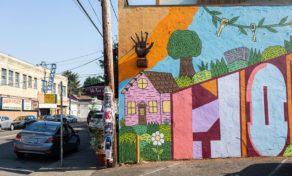
Sunnyside
A quintessential Southeast Portland neighborhood, Sunnyside boasts charming homes, unique shops, and plenty of restaurants. This lively area, which has a high walkability score, includes the Belmont and Hawthorne Districts.
Visit NeighborhoodHistory of Sellwood-Moreland
The area began in the mid-1840s when immigrants arrived over the Oregon Trail and established Donation Land Claims. The initial settlers engaged in business in fruit nurseries, logging and general farming. Most trade and socializing was not with Portland, which was quite distant, but with the City of Milwaukie, which was less than a mile south.
Steamboats provided reliable transportation, which began serving river communities in the early 1850s. The other route of transportation was a muddy track through the underbrush, known as Milwaukie Road. This 150-year old arterial, now known as SE Milwaukie Avenue, is one of the neighborhood’s primary routes.
Sellwood
John Sellwood was an Episcopal minister who owned the land claim in what is now the Sellwood area. In May 1882, a real estate company purchased 321 acres from the Rev. John Sellwood and filed a plat for their new development named “Sellwood.” The real estate company provided a free passenger ferry from downtown Portland to Umatilla Street to attract potential buyers.
The year 1887 marked the opening of the first bridge to span the Willamette River in downtown Portland. Sellwood was also incorporated as a city that year. From this period until the 1920s, the expansion of electrically powered streetcars drove the development of neighborhoods on the east side of the Willamette River. By 1887 Sellwood had almost 100 homes, three stores, a church and a school.
By 1890 Sellwood had added two hotels, three shoemakers, two grocers, a blacksmith, bookbinder, bookkeeper, two saloons, a druggist, a dressmaker and a brewery.
In the spring of 1892, transportation again improved after the completion of the new Sellwood streetcar line. Steamboat traffic began to decline as residents boarded the modern streetcars. With improved transportation, building in Sellwood increased as the small town began to become slightly more urban. In 1893 Sellwood officially relinquished its independence to become a part of the City of Portland.
Moreland
In early 1909 the 500-acre Crystal Spring livestock farm was platted into the subdivisions of Eastmoreland and Westmoreland. The developers promoted their developments as modern subdivisions, sold with sidewalks and curbs in place.
They began advertising Eastmoreland as a prestigious subdivision. Its proximity to the newly-established private Reed Institute was comparable to residential areas adjacent to Stanford University in California.
Westmoreland’s target market was the new white-collar professionals who rode the streetcar to jobs in downtown Portland. Residents of both Westmoreland and Eastmoreland were also marketed with the nearby Eastmoreland Golf Course. By implication, Sellwood was an old-fashioned farm town.
Sellwood Moreland
The first quarter of the 20th century was an era of competitive “boosterism” that pitted Portland neighborhoods against each other. Sellwood and Westmoreland were no exception. As homes rose in Westmoreland, the newly established local newspaper, the Sellwood Bee, became alarmed. It warned that a new commercial area might appear that would undermine the businesses in Sellwood.
The first business, a doctor’s office, was constructed at the southwest corner of Bybee and Milwaukie in 1911. As the new business area grew, competition between Sellwood and Westmoreland began and did not end for fifty years.
By the 1920s, what we now know as the Sellwood Moreland neighborhood was composed of more than thirty subdivisions, which explains why streets are not in a tidily connected gird.
In late December 1925, the Sellwood Bridge opened. While Sellwood business owners hoped that this would increase customers, it did not meet expectations. While Sellwood’s original main street, Umatilla, had been superseded by SE 13th when the streetcar arrived, the increasing auto traffic on Tacoma Street did not change it to a commercial strip.
While the population increased somewhat after the opening of the Sellwood Bridge, the arrival of the Great Depression slowed things down. As the Depression gave way to WWII and later post-war recovery, the Sellwood Moreland area fell behind the times. Sellwood became economically depressed. Newlyweds who had grown up in the area often chose other neighborhoods in which to raise their families. Some churches and businesses left Sellwood for Westmoreland. In the 1950s and ’60s, older businesses closed, and empty storefronts lined SE 13th.
Then in the 1960’s a few antique dealers looking for affordable storefront space discovered Sellwood. By the 1970’s Sellwood claimed at least 30 antique shops in the neighborhood. At the same time, new residents began purchasing and rehabilitating older homes in the area.
As Sellwood began to improve, Moreland businesses changed. The 1980s saw the closure of variety, women’s apparel, furniture and drugstores. However, the spaces were soon remodeled and occupied by restaurants, coffee shops and specialty merchandise stores. As the 20th century closed, new retail stores and restaurants replaced many of Sellwood’s antique businesses.
Today
Today, Sellwood Moreland is a thriving neighborhood with many rehabbed homes and high-density housing such as row and townhouses adding new residents. Other businesses have opened along SE 13th in Sellwood with more new customers, while Westmoreland continues to change and improve. Time will tell as the Sellwood Moreland area moves well into its second century as a neighborhood.



